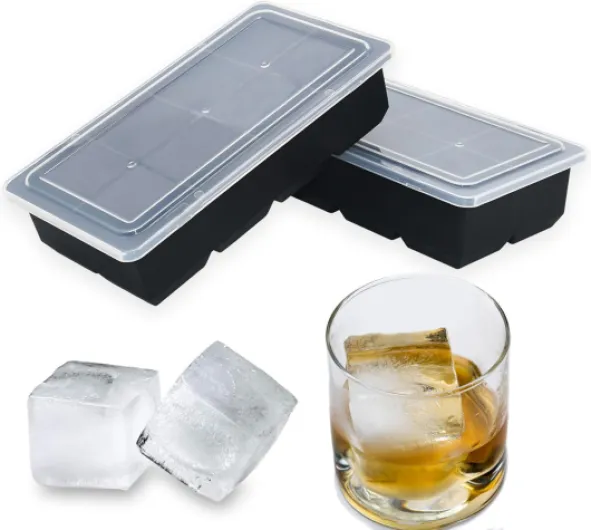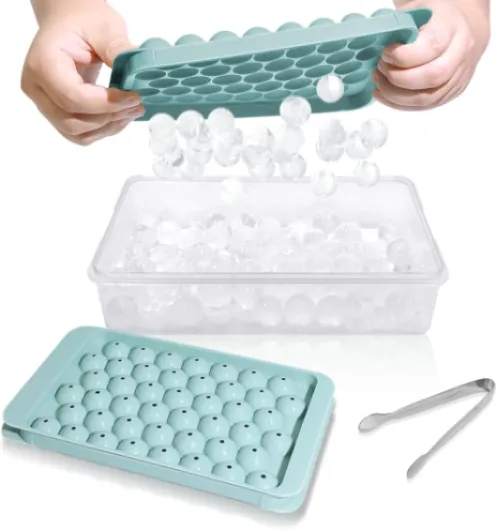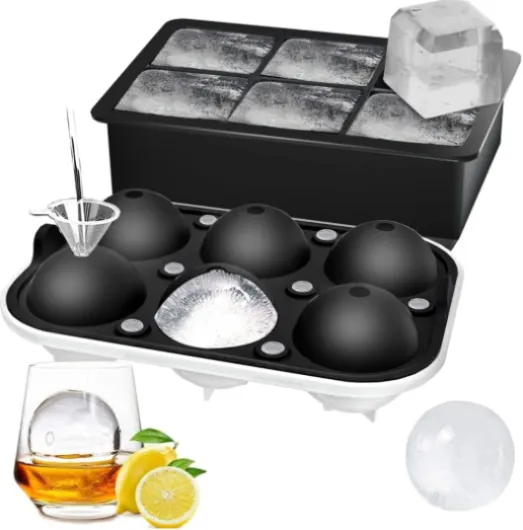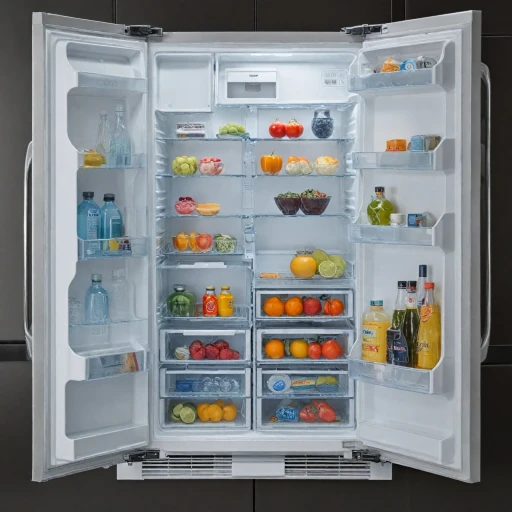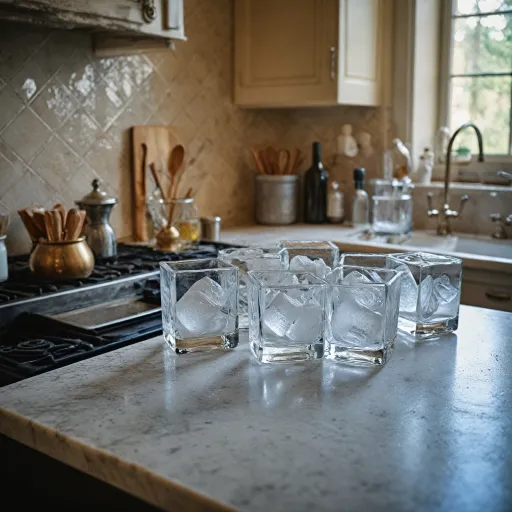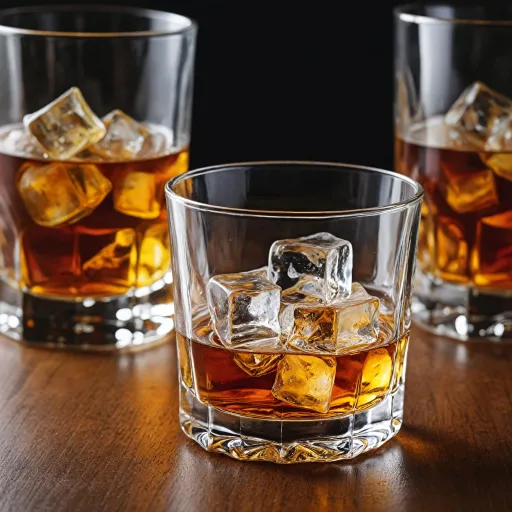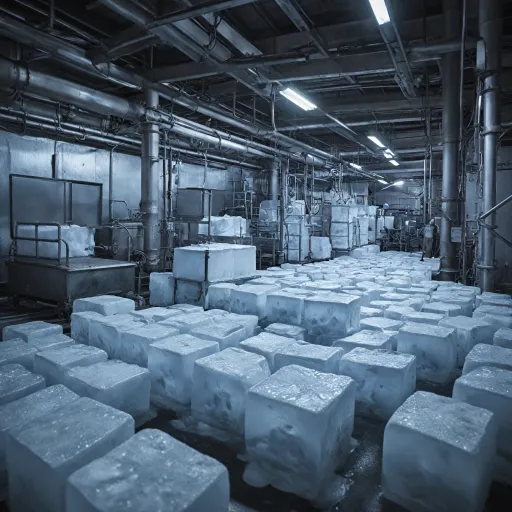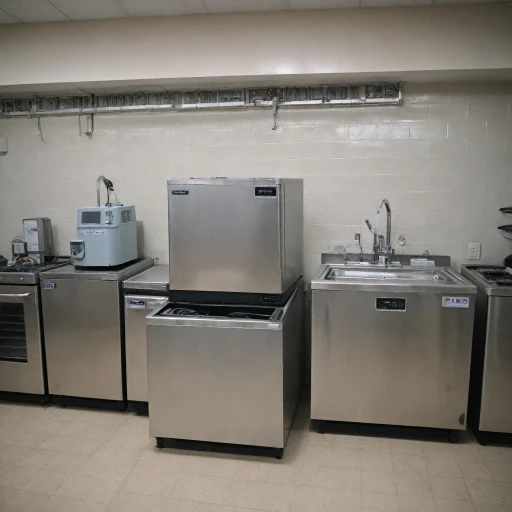
Understanding why ice cubes turn cloudy
Why Most Ice Cubes Look Cloudy
If you have ever made ice cubes at home, you probably noticed that they often turn out cloudy instead of crystal clear. This is a common issue, and it is not just about how the cubes look in your cocktail or wine glasses. The clarity of ice can actually affect the taste and the overall experience, especially if you are serving drinks to guests or want your bar tools to shine.
The main reason for cloudy ice is the presence of impurities and air bubbles trapped inside the cube as it freezes. When you place a tray or mold filled with tap water in your freezer, the water freezes from the outside in. This process pushes any minerals, dissolved gases, and air toward the center of the cube, resulting in that familiar cloudy core. Regular ice cubes from your home freezer or cooler freezer almost always show this effect.
- Impurities in water: Tap water contains minerals and particles that get trapped in the ice, making it look less clear.
- Air bubbles: As water freezes, air gets pushed to the center, creating white, cloudy spots in the ice block or cubes.
- Freezing speed: Quick freezing in a standard freezer or cube tray does not allow air and impurities to escape, so they stay in the ice.
Understanding these factors is the first step to making clear ice at home. The next steps involve choosing the right water, using special cube molds, and even trying directional freezing techniques to achieve that perfect, crystal clear ice for your cocktails and wine glasses. For those who want to keep their ice maker in top shape and avoid unwanted flavors, regular cleaning is essential. You can find effective cleaning tips for your ice machine to help maintain the quality of your ice cubes.
Choosing the right water for clear ice
Choosing the Purest Water for Crystal Clear Results
The water you use is one of the most important factors in making clear ice cubes at home. Regular tap water often contains minerals, impurities, and tiny air bubbles that can cause your ice cubes to turn cloudy. If you want to make clear ice for your cocktails or wine glasses, start by selecting the right water.
- Distilled water is the top choice for making clear ice. It has been purified to remove minerals and contaminants, helping you achieve that crystal clear look in your ice cubes.
- Filtered water from a high-quality filter can also work well. It reduces chlorine, metals, and other impurities that cloud your cubes.
- Boiling water before freezing can help remove dissolved air. Let the water cool, then pour it into your ice cube tray or molds for better clarity.
Using clean water is just the first step. The way you freeze your cubes and the tools you use—like directional freezing techniques, special cube molds, or a dedicated ice maker—will also impact the final result. For those who want to keep their ice maker in top shape, check out these effective cleaning tips for your Euhomy ice maker to ensure your water stays pure and your cubes stay clear.
Remember, even the best water can pick up flavors or odors from your freezer or cooler. Always use clean trays or molds and store your ice cubes in a sealed container to keep them tasting fresh and looking crystal clear for your next cocktail or glass of ice water.
The role of slow freezing in clarity
Why Freezing Slowly Makes a Difference
If you want to make clear ice cubes at home, the speed at which water freezes is a crucial step. When water freezes quickly in a regular freezer, air bubbles and minerals get trapped inside the cube, making it cloudy. Slowing down the freezing process gives air and impurities time to escape, resulting in crystal clear ice blocks that look stunning in cocktail glasses or wine coolers.
- Slow freezing lets air escape: As water turns to ice, dissolved air and gases are pushed out. If the process is too fast, these bubbles get stuck inside the cube.
- Reduces trapped minerals: Using slow freezing with distilled water or filtered water helps prevent mineral deposits from clouding your cubes.
- Improves clarity for cocktails: Clear ice not only looks better in your drinks, but it also melts slower, keeping your cocktail or whiskey from getting watered down too quickly.
To achieve slow freezing at home, you can use insulated molds or a small cooler placed inside your freezer. This method, often called directional freezing, encourages the water to freeze from the top down, pushing air and impurities to the bottom. Once the top layer is fully frozen and crystal clear, you can remove it and discard the cloudy portion below.
For those who want to take their home bar tools to the next level, investing in a dedicated clear ice maker or using specialized cube molds can make the process easier and more consistent. If you’re interested in how clear ice enhances your whiskey or cocktail experience, check out this guide on perfect ice cubes for your whiskey experience.
Remember, the right combination of water, slow freezing, and the proper mold or tray will help you make clear, beautiful cubes every time. This step is essential for anyone serious about making clear ice at home, whether for a special occasion or just to elevate your everyday drinks.
Using directional freezing techniques
How to Use Directional Freezing for Crystal Clear Ice
Directional freezing is the key step that separates regular ice cubes from those crystal clear cubes you see in high-end cocktail bars. The process controls how water freezes, pushing air bubbles and impurities away from the part of the cube you want to use. Here’s how you can use this technique at home, even without expensive bar tools or a professional ice maker.
- Choose the Right Mold or Cooler: Use an insulated cooler or a specialized cube mold that allows you to freeze water from the top down. This method mimics how ice forms naturally in lakes, where the top freezes first and pushes air and minerals downward.
- Fill with Filtered or Distilled Water: For best results, use distilled water or water that has been boiled and cooled. This reduces the minerals and air that cause cloudiness in your cubes.
- Leave the Cooler Uncovered: Place the cooler or mold in your freezer without a lid. This helps control the freezing direction and allows air to escape as the ice forms.
- Slow Freezing is Essential: The slower the water freezes, the clearer your ice block will be. Place the cooler or mold in the coldest part of your freezer, but avoid rapid freezing, which traps air bubbles and impurities.
- Remove and Trim: Once the top layer is frozen solid and the bottom is still liquid, remove the ice block. Discard the unfrozen water at the bottom, which contains most of the trapped air and minerals. Use a serrated knife or ice pick to cut the block into cubes that fit your glasses or wine coolers.
This step-by-step process will help you make clear ice cubes that look stunning in cocktails and elevate your home bar experience. Directional freezing works with most cube trays, molds, or even a small insulated cooler. The result is ice that’s not only visually impressive but also melts slower, keeping your drinks cold without diluting them quickly.
Remember, the quality of your water and the freezing method are just as important as the tools you use. With a bit of patience and the right technique, you can make clear, crystal ice cubes at home that rival those from any cocktail bar.
Selecting the best ice maker for clear ice
What to Look for in a Clear Ice Maker
When you want to make crystal clear ice cubes at home, the right ice maker can make all the difference. Not all machines are designed to produce clear cubes, so it’s important to know what features matter most. Here’s what to consider before you buy:
- Directional Freezing Capability: The best ice makers for clear ice use directional freezing, which pushes air and impurities away from the freezing zone. This process helps create cubes that are almost completely transparent, unlike regular ice from a standard freezer tray.
- Water Filtration: Look for models with built-in water filters or the ability to use distilled water. This reduces minerals and air bubbles, both of which can cloud your cubes.
- Cube Size and Shape Options: Some machines let you choose between large cubes, spheres, or even ice blocks. Larger cubes melt slower, making them ideal for cocktails, wine, or serving in glasses at a bar.
- Insulated Storage: A good ice maker will keep your cubes cold and clear after freezing, preventing them from melting and refreezing, which can introduce cloudiness.
- Ease of Cleaning: Clear ice makers need regular cleaning to prevent mineral buildup. Removable trays, easy-access water reservoirs, and dishwasher-safe molds make this step much easier.
Comparing Popular Clear Ice Makers
| Feature | Standard Freezer | Clear Ice Maker | Directional Freezing Mold |
|---|---|---|---|
| Ice Clarity | Cloudy | Crystal clear | Crystal clear |
| Air Bubbles | High | Low | Very low |
| Water Type | Tap water | Filtered/distilled | Filtered/distilled |
| Cube Shape | Irregular | Uniform | Uniform |
| Ease of Use | Easy | Easy | Moderate |
Extra Tips for Choosing Your Ice Maker
- Check the size of the machine and make sure it fits your kitchen or bar area.
- Consider how much ice you need. Some models make a full tray in a few hours, while others can produce a large ice block for parties or coolers.
- Look for reviews that mention how well the machine keeps cubes clear over time and whether it’s easy to clean and maintain.
By focusing on these features, you’ll be able to make clear ice cubes that look great in any cocktail or wine glass, and enhance the overall drinking experience. Whether you’re using a dedicated clear ice maker, directional freezing molds, or a combination of both, the right tools will help you achieve that perfect, crystal clear result every time.
Tips for storing and handling clear ice cubes
Best Practices for Preserving Crystal Clear Ice
Once you’ve managed to make clear ice cubes using pure water, slow freezing, and directional freezing, it’s important to store and handle them properly. Clear ice is more than just a visual upgrade for your cocktail or wine glass—it also melts slower and keeps drinks crisp. Here’s how to keep your cubes crystal clear from freezer to glass:
- Use a dedicated storage container: Place your clear ice cubes in a clean, airtight container or a cooler inside your freezer. This helps prevent the cubes from absorbing odors or flavors from other foods.
- Limit air exposure: Air in the freezer can introduce tiny bubbles or frost on the surface of your cubes. Keeping them covered reduces this risk and maintains their clarity.
- Avoid stacking cubes: If possible, don’t pile cubes on top of each other. This can cause them to stick together or crack. Use a tray or separate layers with parchment paper.
- Handle with clean bar tools: Always use clean tongs or an ice scoop when transferring cubes to glasses. This prevents fingerprints and keeps the ice looking pristine.
- Let cubes temper before serving: Take the cubes out of the freezer and let them sit for a minute or two. This step helps prevent thermal shock, which can cause cracks when the cube hits the warmer liquid in your cocktail or water glass.
- Store away from strong-smelling foods: Ice easily absorbs odors. Keep your ice cube tray or storage mold away from items like fish, garlic, or leftovers.
Extra Tips for Long-Lasting Clarity
- Use distilled water: If you’re making clear ice in advance, distilled water reduces the risk of cloudiness over time.
- Refresh your stock: Even the best-stored cubes can pick up freezer smells after a week or two. Make clear ice regularly for the best results.
- Consider a dedicated ice freezer: If you’re serious about cocktails or entertaining, a small freezer just for ice blocks or cube molds can help maintain quality.
By following these steps, you’ll keep your clear ice cubes looking as good as they taste, ready to elevate any drink from water to a top-shelf cocktail.
-logo-retina.jpg)
